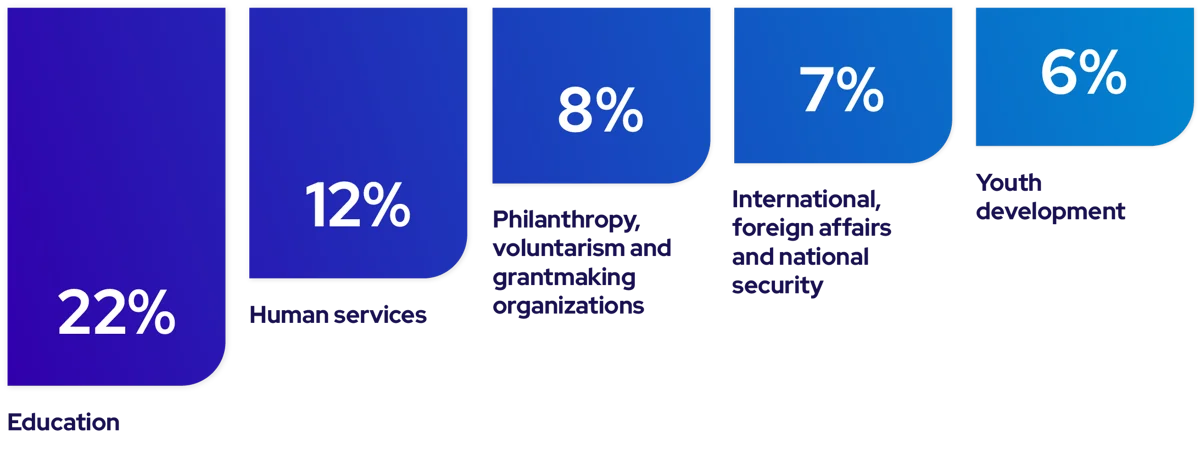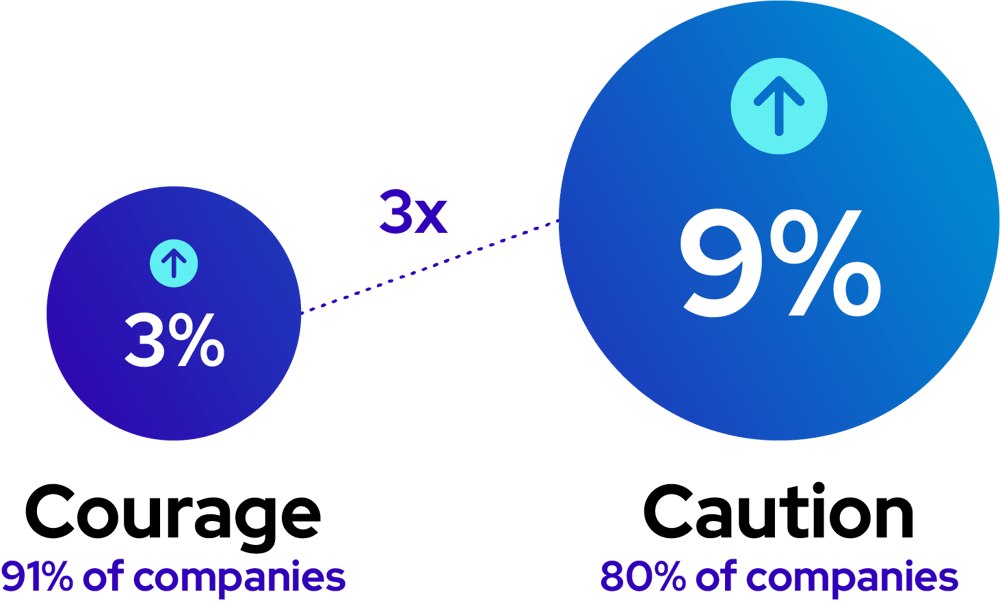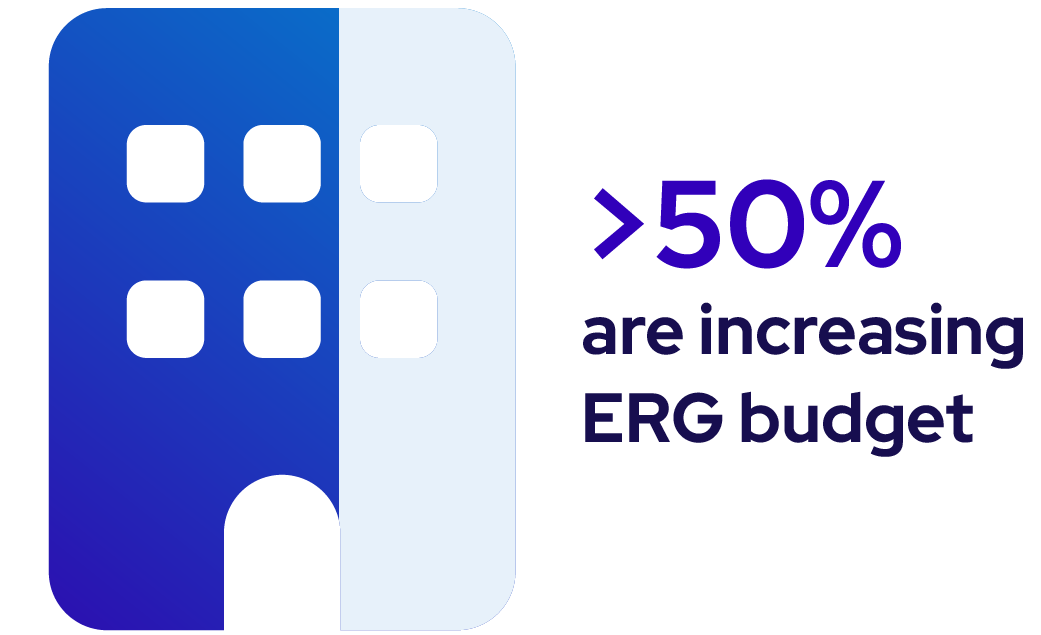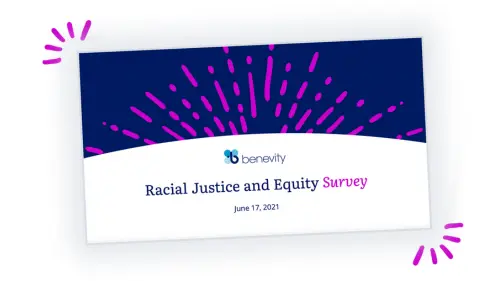Key insights
Businesses will adopt an “impact mindset”
In the fast-moving 2020s, it’s hard to catch our breath. The pace of change is unlike anything we’ve seen before, from COVID to climate change to ChatGPT.
This year, things will continue to move quickly and businesses will need to stay nimble to adapt. We’re living in an increasingly polarized world. People are divided by historic levels of war and internal conflict; by wealth and inequality; by unequal access to technology; and by different visions of the way forward.
This will also be a historic election year, with 2 billion people across 50 nations going to the polls in countries from the U.S. to India. There’s no shortage of division, change and unpredictability coming our way.
Between existential threats and rapid technological developments, companies will be revisiting their talent and culture and their operational and sustainability strategies to ensure that they can weather the sea of change. But that won’t be enough.
To get to the heart of the matter, they’ll need to question whether their corporate purpose is up to the task of addressing these headwinds, ensuring they can maintain relevance over the long term. Employees, consumers and even shareholders, expect a commitment to purpose and a positive impact. And perhaps more importantly, it's becoming more of a business-wide strategy versus something that's siloed in CSR.

Embracing an impact mindset1 will give companies the opportunity to not only meet the moment, but to build resilience into their business, culture and communities. It’s an important step. It will lead us from the react-and-respond phase of the early 2020s to a more strategic and forward-looking approach.

The five trends we’ve identified in this year’s State of Corporate Purpose report are linked by a common thread — a more strategic and forward-looking approach to driving impact.
2023 in review: Businesses fueled impact
Corporate giving outpaced individual giving
In a year marked by high inflation and recession worries, it's no surprise that while total dollars donated by companies and their people increased by 14%, individuals donated, on average, 9% less in 2023.
When the going got tough, companies stepped up

And this year, corporate investment in social impact isn't slowing down

Top 3 investment areas for social impact

Businesses are multiplying the impact of their people's gifts of time
Although employees are giving less of their own money, there's a silver lining. The surge in employee volunteering resulted in a boost in employees donating their volunteer rewards, in which companies match volunteer hours with dollars. There was a 27% increase in reward donations, from $250 million in 2022 to $318 million in 2023.
The takeaway
What we’re seeing gives us confidence that we can trust businesses to truly act as a force for good, especially in times of need. It’s encouraging to see 60% of companies now offering volunteer rewards to motivate and reward people for getting involved – but that means there are still a lot of opportunities for the other 40% of companies.
Strategic granting is back on the rise
This year, companies are once again tying their impact strategy more directly to their core focus and corporate values. This marks a change from the trend that started in 2020, when companies were deploying more dollars towards crisis relief, such as helping communities weather the COVID pandemic and responding to racial justice movements. As part of that reckoning, many companies have now embedded a crisis and DEI lens to the full range of their granting programs, ensuring agility, broader access and greater accountability for the long term.
Top cause categories by grants dollars

The takeaway
The rise of strategic granting will create more long-term commitments, and possibly even new partnerships, that have the potential for greater impact and outcomes.
How ESG continues to evolve in 2024
As we near 2030 and the net zero targets set by many companies, we are seeing a growing urgency around the "E" (Environmental) in ESG. More environmental investments are being made through corporate philanthropic programs, and companies are increasingly partnering with nonprofits across the globe to fund environmental projects, support research and development of sustainable technologies and invest in conservation efforts such as reforestation. This is a way of both accelerating and diversifying their carbon offset, as well as expanding the footprint of their environmental commitments across their business culture and operations.
At the same time, as we've previously predicted, the distinction between the “E” and the “S” (Social) is continuing to fade. All indications point to growing regulatory, shareholder and stakeholder pressures that will have companies measuring, managing and reporting on the totality of their environmental and social initiatives.

Following a year where ESG backlash dominated discourse and news headlines, it's not surprising companies are making some shifts that will change the way they show up in the world.
To be clear, ESG is far from “dying”: 62% of leaders say there is less use of the term ESG, but the same work is continuing.
Employee participation surged, driven by soaring volunteerism
Participation rates6 soared

Volunteer participation rates8 grew across companies

The takeaway
Volunteer momentum is being felt across the board. As companies harness the power of volunteering to unite their people through culture and shared purpose, more people than ever before are getting involved.
A landmark year for volunteering
2023 was a landmark year for employee volunteering, as we explored in our recent State of Corporate Volunteering report. As many companies brought their people back to offices, they leaned into volunteering as a way to unify and connect their people through purpose. Amid this growth, we did see one slip – in the number of volunteer hours per volunteer. With so many new volunteers joining the ranks this year, it’s not surprising to see this metric drop.

The takeaway
With hybrid work the new normal, we expect companies and people to continue to seek out volunteer opportunities as a way to build connection and culture. We can also expect companies’ volunteer ambitions to grow.
Top 5 trends in 2024
Trend 1: Companies cautiously use their voice
Leaders are being choosy about where they use their voice and resources, reflecting learned experience about when and how to activate.
In The State of Corporate Purpose 2023, purpose and polarization went head-to-head. There was an almost even split on whether they should be courageous or cautious. While the tension between the two sides of the dichotomy continues to intensify, caution is now outpacing courage, as companies become more experienced in learning when and how to activate in a way that is resonant and impactful – and aligned with their corporate goals and values.
Caution is outpacing courage

How companies are managing the balance

Trend 2: ERGs climb the corporate ladder

Employee Resource Groups (ERGs) are transcending their Diversity, Equity and Inclusion (DEI) origins, taking on a broader role in companies.
Four out of five companies say that ERGs are increasing in significance and more than half are increasing their ERG budgets. The connection between ERGs and other departments (such as HR and CSR) is strengthening, helping companies become more diverse, inclusive and equitable, while also building better businesses.
86% of impact leaders say their company's leadership sees ERGs as critical to culture. Despite a wave of backlash, companies have continued to invest in DEI, and more specifically in their ERGs as sources of community and belonging.
Particularly in North America, we have observed a notable rise in the importance of ERGs to all levels of employees.
ERGs on the rise

ERGs are integral to social impact
CSR teams, in particular, have found powerful allies in these employee-led groups who care deeply about advancing opportunities and outcomes for the communities they represent. More CSR teams are collaborating with ERGs to enhance awareness, engagement and impact. These partnerships aim to add authenticity to critical cultural moments and crisis responses, and to influence impact strategies, funding and decision-making.

This deepened partnership between ERGs and CSR teams has led to higher engagement in employee giving and volunteering programs, a higher willingness to recommend the company by ERG members and a talent pipeline that’s more diverse.
Trend 3: Volunteer programs level up
With an unprecedented number of active volunteers, companies are reimagining the possibilities.
Hybrid work is now the norm and volunteer programs are a critical tool in culture building and employee engagement. We explored this phenomenon in our recent report, The State of Corporate Volunteering.
A notable development this year is that location-based volunteer opportunities pulled ahead of virtual ones, and now represent the majority of volunteering opportunities.
In-person volunteering pulls further ahead of virtual

Volunteer Acts of Kindness are here to stay

Even as volunteer ambitions grow, it’s important to note the enduring popularity of Volunteer Acts of Kindness (VAOK)9, which are small acts of goodwill not tied to a specific nonprofit – such as a beach cleanup or attending a session hosted by an ERG. These types of volunteering activities accounted for 36% of total hours in 2023. They’re a critical engagement tool, with nearly one-third of volunteers only engaging in VAOK.
More than half of companies (55%) are now evolving their programs further, focusing not just on creating employee connections as they did the past few years through return to office programs. They are now also focusing on driving social impact more deeply through skills-based volunteering and nonprofit board service programs.

Trend 4: AI for all
Impact leaders are being actively engaged by their companies to ensure their AI practices are ethical and responsible, ensuring no one is left behind as hype for the transformative technology peaks.
Artificial intelligence (AI) is rapidly changing our world, and our sentiment towards it is changing almost as fast. As AI started to gain traction last year, we saw strong feelings on both sides. There was optimism that it could unleash humans from repetitive and rote work and usher in new innovations. We also heard cynicism and caution around how it might further create a divide between those who have access and those who don’t and pose a risk of widespread job loss. This year, we're seeing cautious optimism.
The promise and peril of AI

According to the impact leaders we surveyed

Thanks to early and high engagement with CSR leaders, companies are bringing a human-centered approach to AI, attempting to ensure that their strategies don’t lead to unintended consequences or harm, and ultimately, create access and opportunity for all.
CSR teams are using AI for efficiency and insight
The top use cases are aimed at driving efficiency and insight, with some interest in using AI for innovation.
Top use cases
Supporting AI skills learning and adoption in the nonprofit sector
A surprisingly high number of companies, 7 in 10, are supporting AI skills learning and adoption in the nonprofit sector. They’re doing this through grants, in-kind donations, skills-based volunteering or even simply hosting learning sessions and summits to educate and equip nonprofits with some know-how.
This trend is driven by the tech and finance industries, who are early adopters and evangelists of AI. The rapid pace of investment in the nonprofit sector bodes well for the intention to bring everyone along on this transformative journey.
Trend 5: Outcomes-driven philanthropy has arrived
The tight economic environment of the last year is forcing every business to demonstrate value and return on investment.
Impact leaders need to harness data to rationalize their spend and confidently demonstrate outcomes to higher ups, by showing their work doesn’t just “feel good” but actually “does good” as well.
Impact has to be measured to be believed

Impact leaders are exuberant about the fact that impact data will help justify increased investment in their programs and allow them to achieve their efficiency and business goals.
- 90% of leaders say that more impact data will increase investments
- 88% need to be able to compare nonprofits on their outcomes to make better investment decisions
- 86% need to be able to compare their impact with other companies
The downside of reporting — the burden on nonprofits
But there’s another side to the story: the work that goes into the reporting. For the second year in a row, we overwhelmingly heard that impact reporting shouldn’t put a burden on nonprofits (92%).
Data from Chief Executives for Corporate Purpose (CECP)’s Giving in Numbers 2023 Edition suggests it's going to be burdensome and inefficient for all stakeholders if we continue to do it the way we’ve always done it.
The current approach is manual, inefficient and lacks standardization.

All together, this data reveals a powerful opportunity to bring scale to an area of CSR that has been ripe for disruption for decades. With more companies driving towards efficiency gains and cost savings, now is the time to consider reinventing the traditional approach to Measurement & Evaluation (M&E). But it will take the courage of impact leaders to shed old habits and approaches to historical data to truly realize the value of outcomes-driven philanthropy.
Conclusion
Businesses can confidently navigate the rest of the 2020s by embracing an impact mindset.
As the dust settles from a rocky start to the decade, we have a clear sightline into the second half of the 2020s. The question of purpose is settled now – it matters. It’s no longer a separate wing of a company; it’s what makes a company fly. 2024 is shaping up to be a year in which companies will tie their impact strategy back to the business’s core focus and corporate values, with a sharpened focus on generating proof of positive return on investment (ROI) for the company and its communities. By embracing an impact mindset, companies have the opportunity to catalyze change from the inside out. This is how businesses won’t just survive, but thrive.
Methodology

Benevity, a certified B Corporation, is the leading global provider of social impact software, providing the only integrated suite of community investment and employee, customer and nonprofit engagement solutions. Benevity provides a robust, all-in-one SaaS platform designed to simplify and scale CSR and social impact programs. The platform unifies giving, volunteering, grants management and employee mobilization - empowering companies to connect purpose with measurable business results. Benevity has processed more than $18.5 billion in donations and 99 million hours of volunteering time to support 513,000 nonprofits worldwide. The company’s solutions have also facilitated 1.5 million acts of goodness and managed grants worth $18 billion. For more information, visit benevity.com.














